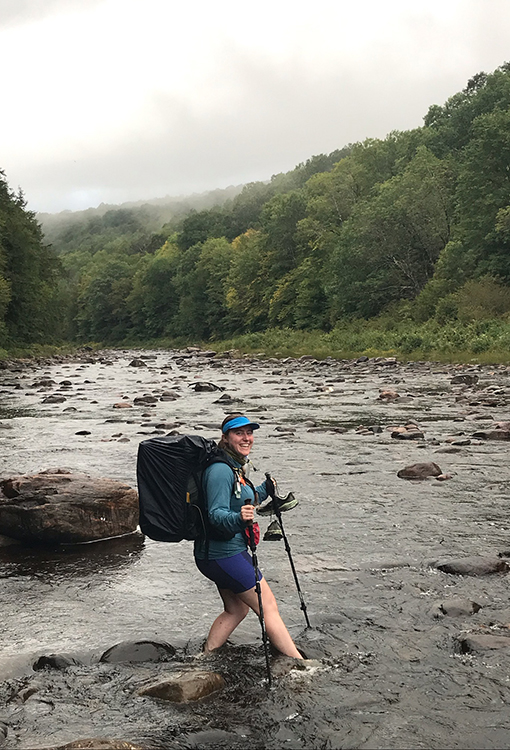
JULIA GLADSTEIN ON THE NPT
New York’s Hidden Gem: A Trip Report from the Northville-Placid Trail
Author: Julia Gladstein
We were fortunate enough to get some insight into a lesser known Adirondack trail from Julia Gladstein after recently completing the Northville-Placid Trail. Read on to see what you might be missing from this hidden gem.
The Low-down
The Northville-Placid Trail (NPT), is a gem of an East Coast hike spanning much of New York’s Adirondack Park.
The trail is a sparsely-traveled lowland route that winds its way through the valleys in between the mountainous peaks that the park is known for. The hiker is nestled in a lush northern forest environment for the entire hike, often navigating around various secluded lakes.
At 138 miles, it can be completed in one to two weeks, depending on your pace. The NPT covers areas that are extremely remote—while most hikers enjoy the High Peaks region of the Adirondacks, bagging 4,000+ ft peaks, the NPT traverses some of the most remote parts of Adirondack Park, like the West Canada Lakes wilderness.
If solitude is what you’re looking for on a shorter thru hike and you’re not afraid to get your feet wet, the NPT is the trail for you.
What To Look Forward To
The NPT has a lot of character that makes it a truly unique trail. It is the oldest hiking trail in New York State, first developed in 1922. Some of the abundant lean-to’s that span the length of the trail remain some of the oldest in Adirondack Park. Due to the remoteness of the area the NPT covers, you are treated to abundant northwoods wildlife—we saw and heard loons on multiple lakes, frogs, a snake, a heron, deer, and even saw some very large moose tracks.
Perhaps the most unique aspect of the NPT is an area near the northern end commemorating the site where bygone local hermit, Noah John Rondeau, made his home on the banks of the Cold River. There are some found artifacts from his hermitage you can look at after hiking through an area that, even decades later, still seems remote enough to feel outside of time, despite being less than 30 trail miles from the town of Lake Placid. It’s no wonder it was home to a hermit who, in his time, was somewhat of a local legend!
Onto The Adventure
My group of three (Dropsticks, Moxie, and me, Puma) completed the NPT in the second half of September in eight and a half days from Northville to Lake Placid. We left one car at the southern end in Northville and one at the northern end in Lake Placid.
On our way to start the trail in Northville, we left a 6 day resupply with notorious NPT trail angel Piseco Bob. Though Bob’s home is only about ⅓ of the way into the trail if you hike northbound, any hiker would do well to take him up on one of his services—you can leave a resupply box in his garage, he shuttles anywhere on the trail, his home is steps from the Piseco post office, you can charge your electronics in his garage, he’ll give you water if needed, plus he’s a joy to talk to and so willing to help out hikers.
Once loaded down with 6 days of food in our bear canisters, the rest of the hike, for us, was a total wilderness experience. We went straight through, not going into the town of Long Lake about ⅔ of the way in, though this is a great option for a nero or zero day—there’s even a 1.5 mile spur trail you can use to walk into town.
Caution: Wet Conditions Ahead
Despite the NPT not having a lot of elevation gain/loss, the trail can get technical in regards to water crossings and flooded/beaver dam sections, which can slow down your mileage at times. This is definitely a trail where your feet will get muddy and wet and it’s all part of the experience!
There are interesting bridges in some places; in others, you’ll be wading through ankle, shin, or even deeper water depending on rainfall levels. Some sections of the trail are a bit overgrown as well—being brushed against by vegetation as you hike is a common occurrence in some sections.
Due to the trail being so remote, it only makes sense that trail maintenance may take a back seat, or that it’s simply too difficult for crews to keep up with the growth of such a wild area. Perhaps to make up for this, the hiker will always have a nice place to rest their head at night, as the lean-to’s are very well taken care of. Nothing beats staying totally dry overnight during a rainstorm after a long day of not-so-dry hiking!
Something For Everyone
The NPT was a great trail for a short thru hike and I would say fall is the perfect time to do it. It’s definitely a trail to be well prepared for though—the remote nature of the area gives very little cell service, so a map, GPS with SOS capability, plenty of food (bear canisters are strongly recommended but not technically required in this section of the Adirondacks) and proper rainwear/dry clothes are essential.
For the hiker who gives the NPT a try, they will be treated to a true wilderness experience in some of the most remote backcountry areas remaining in the country.
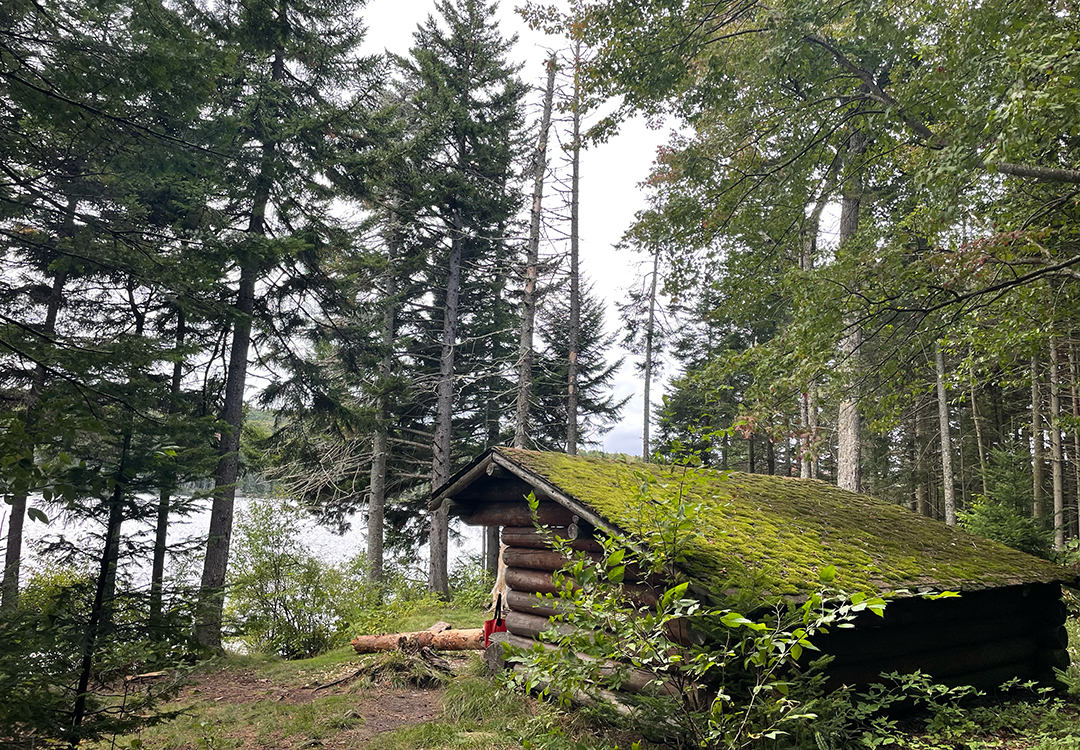
AN EAST COAST LEAN-TO (Photo: Julia Gladstein)

(Photo: Julia Gladstein)
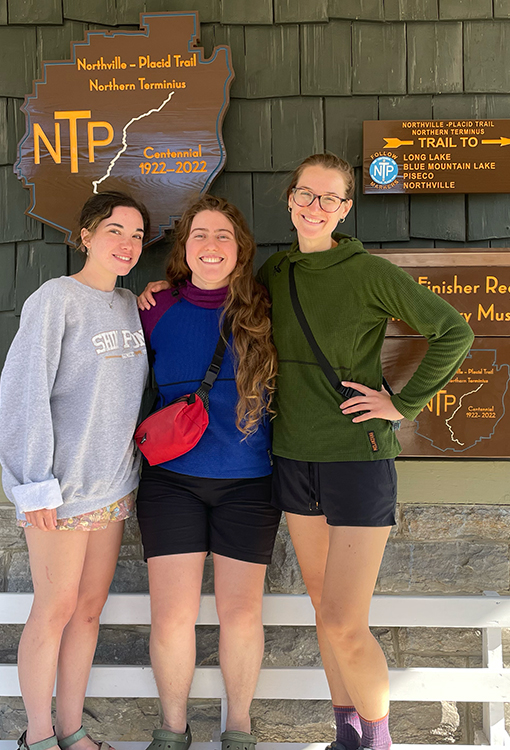
DONE! (Photo: Julia Gladstein)
AN INTERVIEW WITH THE ADIRONDACK MOUNTAIN CLUB (ADK)
We had the opportunity to chat with Ben Brosseau, the Director of Communications at the ADK to get keyed into their history with the NPT as well as some additional tips for future NPT hiker hopefuls.
ULA: Can you give us a little background of the ADK’s involvement in the trail?
Ben: Sure! The NPT was started in 1922 and opened to the public in 1924 by the Adirondack Mountain Club; we built the trail. It currently runs 138 miles though it was shorter when it was first built, and runs from Northville as the southern terminus to the village of Lake Placid as the northern terminus.
ULA: What do you think makes the NPT so interesting compared to some of the other more popular routes in the park?
Ben: The NPT is pretty emblematic of the transition in the northeast from extractive industries to conservation and outdoor recreation, the Adirondack Park was pretty small back then with limited accessibility. At the request of the state ADK built the trail so people could have more access to the outdoors and to increase the trails through the park. Today there’s about 2,000 miles of trail through the Adirondack Park. It’s kind of like its own little time capsule in that way. A dichotomy of ideologies in a rapidly industrializing world that went a little counter to what was going on in the cities.
ULA: What are some things worth noting for potential hikers?
Ben: It’s probably one of the more remote, if not the most remote trails in the northeast at times which people don’t realize. So as you’re preparing be aware that you’re going to be pretty far from most resources including cell service at times. There’s really only one or two opportunities for resupply along the trail, one at Piseco which is fairly early on in the trail depending on what direction you go, and then another in the middle of the trail at Long Lake. The NPT isn’t as traveled as something like the High Peaks Route so it gives a more intimate experience that a lot of people don’t know about. It’s a great way to get to explore the Adirondack Park in ways that many don’t. Most go to the small area of the High Peaks Wilderness. It’s about the same size as the White Mountain National Forest. But we have an additional five and a half million acres around that which aren’t being utilized. Another point is if you don’t have time to do the whole thing you can break the trail up into 3 main sections via the main roads and are a great way to explore the trail when time is limited.
One last thing to note is that the trail could potentially flood in some sections due to beaver activity so just a heads up on that!
ULA: What are some common misconceptions you run into about the trail?
Ben: Bears and bear canisters! Bears are present along the trail. We have Black Bears in the Adirondacks. There’s a section of the NPT that runs through a section of the High Peaks Wilderness where bear canisters are required. People don’t always realize that and just try to hang their food via the PCT hang and then get into trouble. Bears are pretty knowledgeable of the areas we frequent and many people don’t perform the PCT hang correctly, so in order to mitigate that we always recommend people to use a hard sided canister!
ULA: How can people help support the NPT?
Ben: It’s in desperate need of more trail maintenance and resources! The best way for people to help would be to volunteer, donate, or message their local legislators for funding for trail work in the Adirondacks. That’s another great way to support. Next year is the Centennial anniversary of the NPT opening to the public and we have a lot planned for that. Just something for people to keep an eye out for. If they want information on trip planning, most of the staff in outreach and education at the Cascade Welcome Center have hiked the entire trail so we love getting to help people plan! The last bit is if they’re looking to get involved they can visit www.ADK.org/volunteer.

JULIA GLADSTEIN
AUTHOR
Julia Gladstein (trail name Puma), thru hiked the Appalachian Trail in 2019 without any prior backpacking experience and quickly became addicted to hiking trails all over the country! Since 2019, she has hiked the Vermont Long Trail, The Colorado Trail, the Alabama half of the Pinhoti Trail, various shorter trails in Indiana, The Art Loeb Trail, and most recently the Northville Placid Trail in her home state of New York. She lives in a self-built van with her partner, Pusher (also AT 2019), and is looking forward to hiking as many trails as she can in future years, starting with the Pacific Crest Trail. She has been a green vest at REI since late 2019, squeezing in the aforementioned hikes whenever possible. Her trusty ULA Circuit pack has joined her on all of her backpacking trips—an approximate total of 3,400 miles!
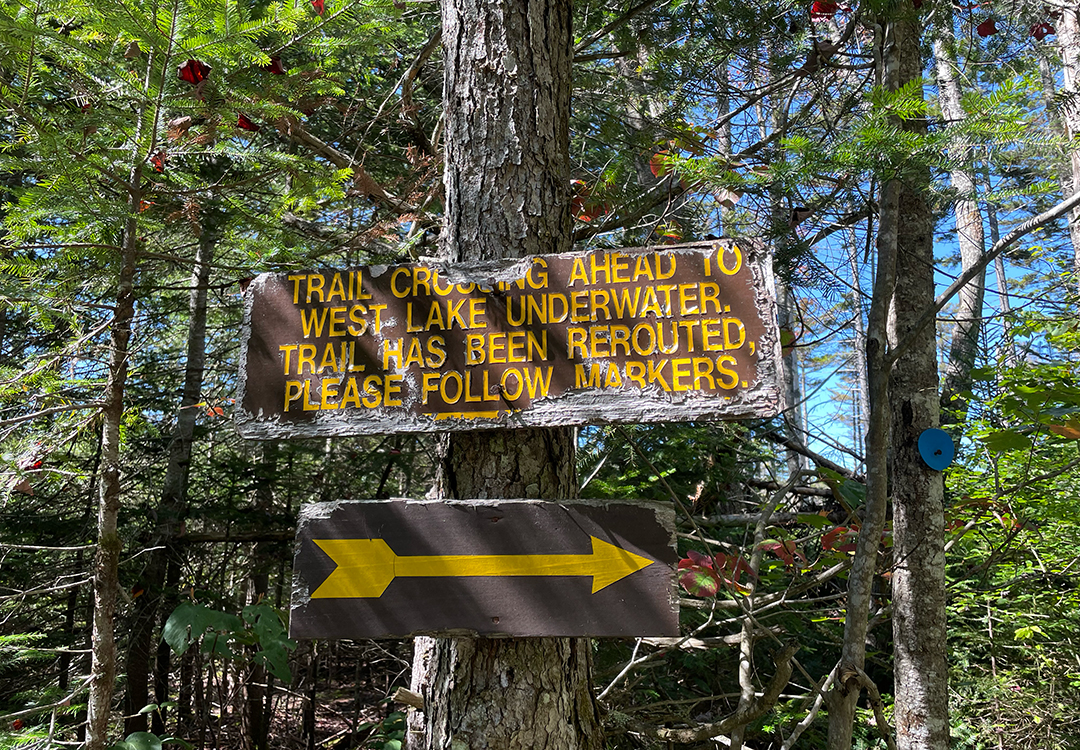
Emblematic of the transition in the northeast from extractive industries to conservation and outdoor recreation. The best way for people to help would be to volunteer, donate, or message their local legislators for funding for trail work in the Adirondacks.




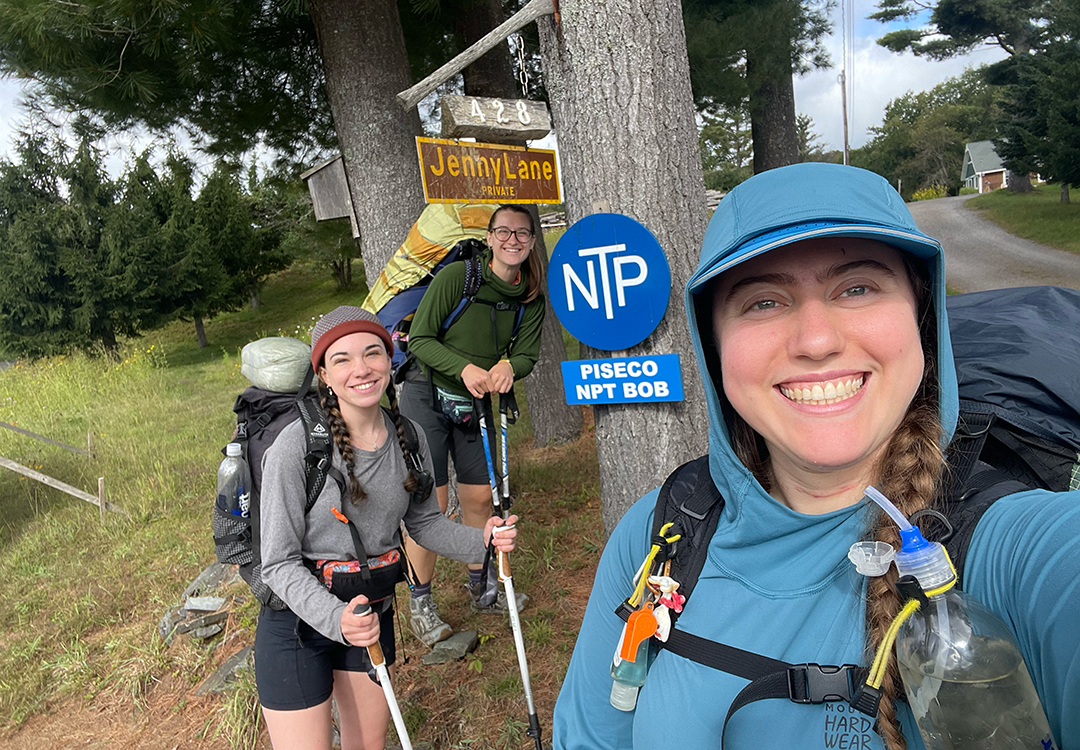
0 Comments